Case Bulletin – Roverano v. John Crane, Pennsylvania Supreme Court
In Roverano v. John Crane, the Pennsylvania Supreme Court considered whether the Fair Share Act requires a factfinder to apportion liability on a percentage, as opposed to a per capita basis, in strict liability asbestos actions. The Court also considered whether the Fair Share Act requires a factfinder to apportion liability to bankrupt entities that entered into a release with plaintiffs. Ultimately, the Supreme Court decided that for strict liability claims apportionment is required to be per capita. The court also stated that bankrupt entities that entered into a release with plaintiffs should be included on the verdict slip.
William Roverano was a carpenter who was exposed to asbestos products from 1971 until 1981. Mr. Roverano also smoked cigarettes for about thirty years, quitting in 1997. Mr. Roverano was diagnosed with lung cancer in both of his lungs in November of 2013. In March of 2014, Mr. Roverano brought a strict liability and negligence lawsuit against thirty defendants alleging that exposure to their asbestos products caused his cancer. In January of 2016, one of the remaining defendants, John Crane, Inc., filed a joinder complaint against Johns-Manville
Sometime before the trial, multiple defendants filed a motion in limine alleging that the Fair Share Act, 42 § Pa.C.S. 7102, applied to asbestos cases. These defendants asserted that the Fair Share Act required the finder of fact to allocate liability to each defendant depending upon the percentage of total harm their products caused.
In March of 2016, after completion of discovery, Hajoca Corporation filed a motion in limine seeking to have the 14 asbestos bankruptcy trusts with which the plaintiffs had filed applications for compensation listed on the verdict sheet.
In ruling on these motions, the trial court ruled that liability would be apportioned on a per capita basis and refused to list the bankruptcy trusts on the verdict sheet. At trial, the jury found in favor of the plaintiffs. Crane and Brand Insulations, Inc. then filed post-trial motions arguing that the Fair Share Act requires the factfinder to apportion damages on a percentage basis and requesting the trial court mold the verdict to reflect a set off for compensation the plaintiffs had or will receive from the bankruptcy trusts. The trial court denied these motions.
On appeal, the Superior Court ruled that the Fair Share Act applies to strict liability and replaced the per capita apportionment with a percentage allocation method. The Superior Court also concluded that the jury should consider evidence of any settlements the plaintiffs obtained from the bankruptcy trusts.
The Pennsylvania Supreme Court then granted the Roverano’s petition for allowance of appeal to consider whether the Superior Court misinterpreted the Fair Share Act in holding that individual percentage basis apportionment was required in strict liability asbestos cases and that the Act requires the jury to consider evidence of settlements with bankruptcy trusts.
- The Fair Share Act does not Specifically Preempt Pennsylvania Common Law Favoring Per Capita Apportionment in Strict Liability Asbestos Actions.
The Court concluded that the Superior Court’s directing the jury to “engage percentage apportionment of liability in strict liability asbestos cases in the same manner it would in a negligence action” was improper. Roverano v. John Crane, Inc., Nos. 26 EAP 2018, 27 EAP 2018, 2020 Pa. LEXIS 1035 at *28 (Feb. 19, 2020). In making this determination, the Court looked to the Statutory Construction Act to determine if the legislature affirmatively repealed existing law or specifically preempted accepted common law. Pennsylvania common law holds that liability is apportioned equally among joint tortfeasors in strict liability actions. The Court specifically differentiates this from negligence actions “where liability is allocated among joint tortfeasors according to percentages of comparative fault.” Id. at *29. The Court determined that strict liability is “liability without fault” then it would be “improper to introduce concepts of fault in the damage-apportionment process.” Id. Because each defendant is wholly liable for the harm in strict liability actions, then the Court has held that liability must be equally apportioned. The Court further stated that since lung cancer resulting from asbestos exposure is a single, indivisible injury, then the individual contributions to the plaintiff’s total dose of asbestos would be impossible to determine and as such impossible to attribute percentage based liability. The Court determined that
[I]n asbestos cases where expert testimony is necessary to establish causation, and those experts agree there is no scientific or medical basis to apportion liability, it is impossible to instruct a jury to apportion liability for an indivisible injury on a percentage basis.
Id. at *38.
The Supreme Court only discussed per capita apportionment based on strict liability claims. It did not do so relative to claims that would involve negligence and strict liability. This is noteworthy because the employer defendant in Roverano was in fact one of the parties found liable reducing the amount owed to the plaintiff by the defendants that went to trial. The Pennsylvania Supreme Court in Roverano discusses at length that the case before it was a strict products liability claim, although it truly was not one since the employer was a named defendant. It is difficult to discern how the employer, PECO Energy Company, could have been strictly liable as the operative amended complaint in the case specifically stated that the claim against the employer defendant was for negligence. The verdict form does not distinguish between the employer and the product defendants. It is presumed that because the employer defendant settled before trial, the defendants that proceeded to trial did not pursue this distinction (and the defendant that originally filed the motion in limine had also settled prior to trial) and the plaintiffs did not do so either. The defendant in Roverano that filed the motion in limine to apply the Fair Share Act to require apportionment noted that there were claims of strict liability and negligence involved. The trial court indicated that it would permit the one defendant’s liability expert to attempt to quantify and kind of make sense for the jury percentages of apportionment relative to particular products. However, the trial court noted that the plaintiff’s testimony was clear and unequivocal that asbestos exposure from individual products cannot be quantified and the defendants presented no evidence to the contrary, thereby reaching the decision to apportion liability on a per capita basis.
- The Fair Share Act Permits the Finder of Fact to Consider Liability of Bankrupt Entities Upon Appropriate Requests and Proof.
The Court concluded “that bankruptcy trusts that are joined as third-party defendants or that have entered into a release with the plaintiff may be included on the verdict sheet,” but only “upon submission of appropriate requests and proofs.” Id., at *47(internal citations omitted). In reaching this conclusion, the Court determined that defendants would be disproportionately held liable for harm that they caused if juries are not allowed to consider these other sources of asbestos exposure.
The Court found that the trial court should have included Manville Personal Injury Trust on the verdict sheet “for the limited purpose of allocating liability” pursuant to the Manville Trust TDP and because Manville was joined as a defendant. Id. at *51-52. The Manville Trust TDP provided that the trust consents to inclusion on a verdict slip when joined as third party defendant. The Court does not stop at only allowing trusts which consent to inclusion on a verdict slip to be presented to the fact finder.
The Court determined that 42 Pa.C.S. § 7102(a.2) allows a factfinder to: “apportion liability to those asbestos bankruptcy trusts that have entered into releases with [plaintiffs] but were not named as defendants.” Id. at *52. Under Section 7102(a.2), the question of the bankruptcy trusts’ liability “shall be transmitted to the trier of fact upon appropriate requests and proofs by any party.” 42 Pa.C.S. § 7102(a.2). The defendants in Roverano requested that the bankrupt entities be included on the verdict sheet in their motions in limine, however the trial court denied this motion. As such the Court remanded the matter to the trial court to determine what additional requests and proofs are necessary and to determine the sufficiency of the submissions.



